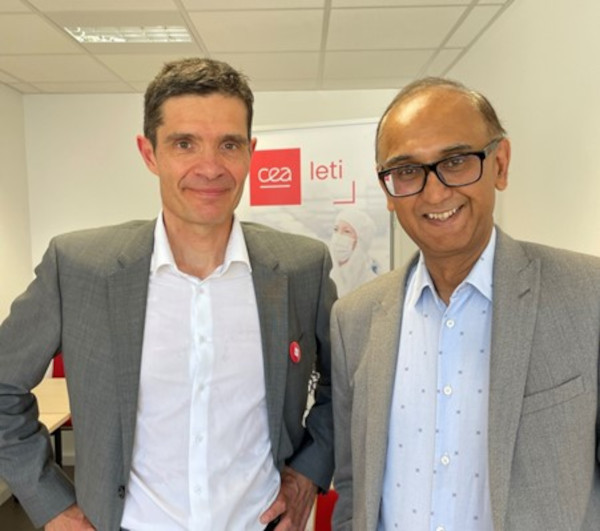[ad_1]
//php echo do_shortcode(‘[responsivevoice_button voice=”US English Male” buttontext=”Listen to Post”]’) ?>
A continual theme in most of the conferences I’ve attended this year: in this age of AI in almost everything, semiconductor technologies must enable us to do more and more computing while keeping energy consumption the same or lower. In other words, do more with less.

This was evident at this week’s Leti Innovation Days 2023 conference in Grenoble, France, the annual event where research organization CEA-Leti showcases the advanced technologies and research it has been working on, both through its own researchers and with partners like GlobalFoundries, Soitec and STMicroelectronics.
In an exclusive video interview with EE Times (click on the video above), CEA-Leti CEO Sebastien Dauvé underlines the sustainability message being essential in any new technology and product development. He highlights why we need to rethink computer architectures going forward in a more-than-Moore era of heterogenous and 3D-stacked systems, consider things like compute-in-memory, and deliver innovation that reduces energy use in the processing of masses of data.
This was echoed by other speakers at the conference. Agnieszka Thonet, distinguished technologist for HP Technology Strategy, said machine-generated data will reach significant levels of scale, and that requires a systemic approach to helping reduce the lifetime energy footprint of products, from cradle to gate to grave and back to cradle.
“AI is driving the re-invention of computer architectures,” Thonet said.

Stellantis CEO Ned Curic said in his talk that we must do more with less as the automotive industry puts more and more compute into vehicles, which are becoming increasingly connected and autonomous.
Frederic Godemel, EVP at Schneider Electric, said that the semiconductor industry also needed to look at its energy use. “The world needs both more and less energy,” he said, referring to the need for more energy for more AI but less energy to deliver what the world needs. “How we consume energy [today] is unsustainable.”
He cited an example where, if we double the production of chips, the energy used to produce them is akin to doubling the energy used by a country like Portugal.

Soitec CEO Pierre Barnabe also highlighted how his company was striving to drive the transition toward sustainability with its own innovation and operations, by reducing the environmental footprint across the life cycle of its products, and reduction of water intake by responsible water management for its operations.

The moonshot of our era: climate change
The sustainability message echoes the theme of imec’s ITF World Summit in Antwerp, Belgium, just over a month ago. In his opening keynote, imec CEO Luc Van den hove said the world is facing a poly-crisis, which includes the geopolitical dimension but more significantly with regard to energy, too.
“There is no debate about the moonshot of our era: its climate change,” Van de hove said. “Semiconductors will serve as the flywheel toward the transformation to a sustainable society.”
He added that this will require optimization of computer architectures, and development of systems that build upon the cross-pollination between sciences, sectors and industries. This is imperative given that compute needs for AI are exploding. In particular, he said that generative AI was the modern big bang, and as a result, hardware and software must be co-developed in an agile and optimized way.
Van den hove noted methodologies like 2D/3D stacking could provide an energy-efficient approach to scaling beyond Moore’s Law, and a revamp of semiconductor manufacturing processes needed to be a part of the sustainable system puzzle. “Doing nothing is not an option,” he said. “A holistic approach across the semiconductor ecosystem is needed.”
At ITF World in Belgium, Mark Papermaster, CTO and EVP for technology and engineering at AMD, repeated his message from his keynote at last year’s Design Automation Conference (DAC) in San Francisco: the explosion in computing needs is at an inflection point, and the key grand challenge for the industry is energy.
At both conferences—Leti Innovation Days and ITF World—it was clear that the leading European research and technology organizations were deeply focused on delivering innovations to help reduce carbon footprints resulting from both the explosion in compute as a result of the growth in AI and generative AI, and the semiconductor industry itself as it strives to deliver the chips that enable more compute and smarter technologies.
In other words, they are focused on how to enable and deliver sustainable high-performance computing for the era of AI and connected intelligent devices.
[ad_2]
Source link

